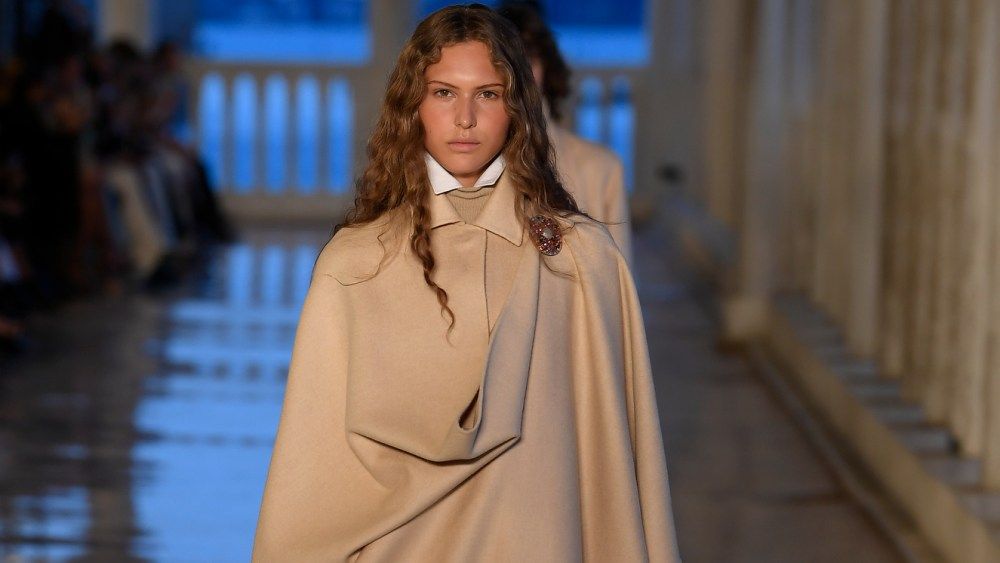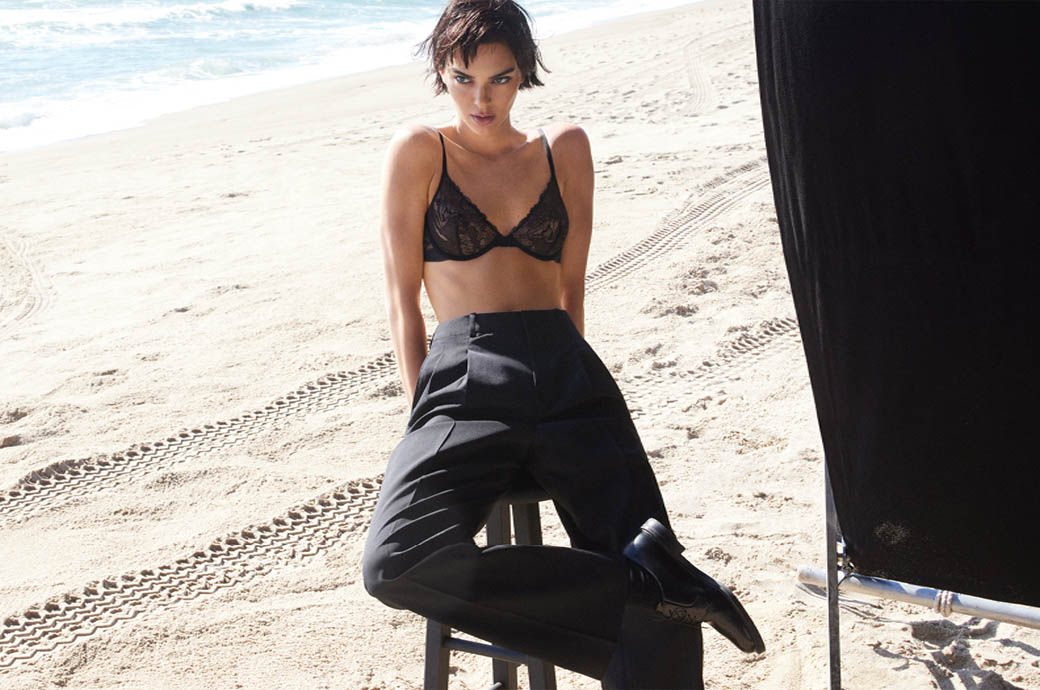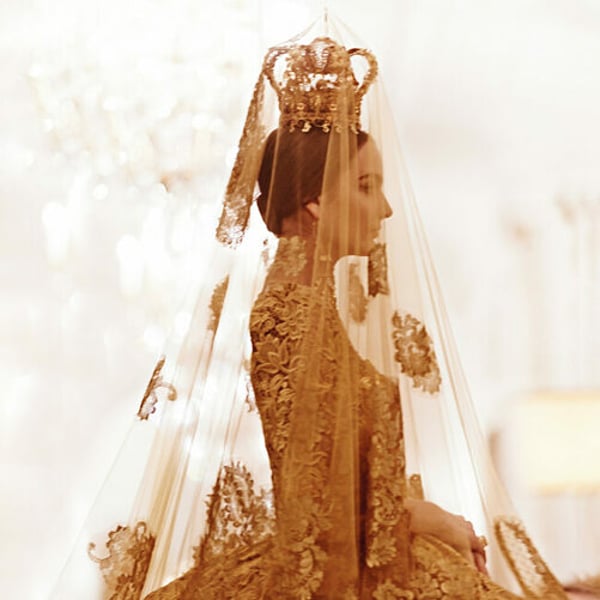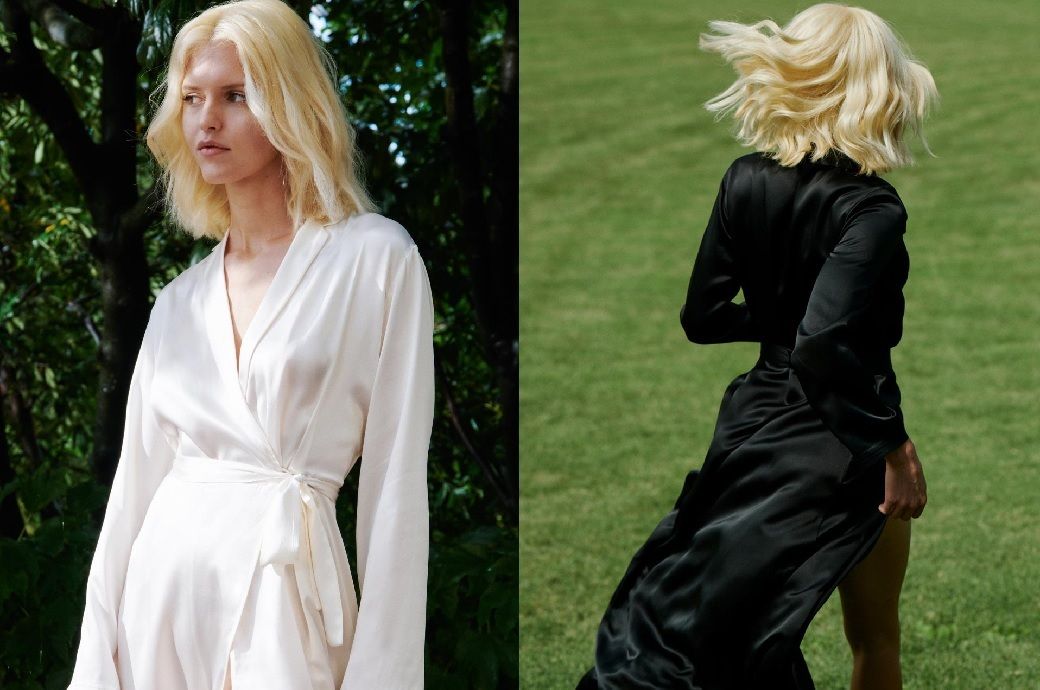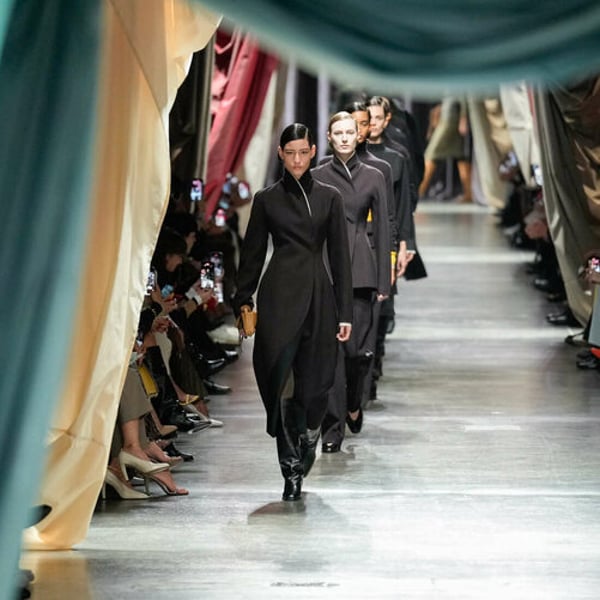VENICE — Venice is much more than a postcard, romantic ideas that tourists from around the world bring home, and Ian Griffiths helps us remember that, as we dust off our history books.
For Max Mara's resort 2025 collection, the brand's creative director turned to Marco Polo, the Venetian merchant who traveled from Europe to Asia in the 13th century.th century, who lived in China for 17 years, and his book, “Il Milione” or “The Travels of Marco Polo,” which describes his experiences. This year marks 700th anniversary of his death, and several exhibitions have been organized around the world, including one at the Palazzo Ducale, the Doge's Palace, where Max Mara presented his collection on Tuesday night – a stunning Gothic venue overlooking the lagoon.
Griffiths was interested in the concept of luxury as a starting point, saying during a previous interview that “no one did more than Marco Polo to open up trade between East and West. And that was a very light point of reference that he wanted to make in the collection: how cooperative trade between East and West produced beneficial results around the world. Where better to talk about luxury than the place where luxury was practically invented by Marco Polo and people like him? “It really sparked this huge luxury goods trading market around the world.”
Hence the choice to stage the show in Venice, after Stockholm last year. “This city is so magical and sometimes you have to remember that it was built on lucrative trade. Commerce produced beauty then as it does now; I mean, if you look at the fashion industry, which is a trade, it produces and supports the arts, as it did then,” Griffiths continued.
That said, the designer was quick to stress that “I wasn't making a BBC period drama about Venice. That's why I'm glad I'm not a college student who can be judged on my fidelity to my research material, because I've allowed myself some freedom.” In fact, the inspiration was not literal, only “vaguely influenced by the time of Marco Polo and the countries he traveled through, but it is designed as a wardrobe to be worn by a competent modern woman.”
And so it was: sophisticated, ready for any boardroom, but still feminine and even delicate, as seen in feather-light shirt dresses or silk shirt-and-shorts combinations.
Griffiths admitted that the collection was a little more elaborate than usual and included more patterns than one is used to seeing at Max Mara, such as fabrics with geometric and triangular motifs. But he never took the issue too far. Damask patterns with an oriental feel were also rendered lightly, with shiny gold threads or tone-on-tone, as “gaudy” is not a word that exists in Griffiths' dictionary. The richly woven patterns featured stylized floral motifs associated with Zoroastrianism, Hinduism, and the Chinese concept of yin and yang.
Being Max Mara, it was difficult to choose the best coat; This is what Kate Hudson, who wore a long black belted dress and looked sensational, sat next to Brie Larson and Yara Shahidi, talking about the next phase of her career as a successful singer. After all, Griffiths himself described the collection's attitude as “slightly posh, arrogant and even bravado.”
Polo spent 20 years at the court of Kublai Khan in Mongolia, where camel wool and cashmere were still produced and were also sold on the so-called Silk Road, and one had to restrain oneself not to reach out and caress the camel coats. from The Catwalk. There was also a simple sleeveless camel column dress that caught the eye. A mosaic trench coat that shimmered with gold accents was spectacular and Griffiths introduced a new Teddy Coat embroidered with delicate beading in shades from cream to gold and brown running down the sleeves and sides, which was a great way to evolve one of the characteristic articles of the brand. The gold mosaic motif was also repeated on the ribbed sweaters.
The fabrics were shown with an intriguing embroidered pattern that appeared unfinished or with padded, quilted sleeves.
Griffiths paid much attention to collars and cuffs, sometimes resembling elongated scarves, and puffed, or balloon-shaped sleeves reminiscent of medieval blouses. Other details included oversized silk tassels used for belts and thick cords.
The shapes were long and slim, as in a belted pantsuit with a sleeveless jacket or shorts, with long-legged looks and various miniskirts.
When asked how he felt about working with these designs again, he said: “They meant so much to me at the time, I felt quite defensive even around people touching them, it was the result of months and months and months. of work. I worked with Ossie Clark on the patterns for those. So it really was an important project. I'm sure it meant absolutely nothing to anyone else because it wasn't his college degree project. But it represents my beginning.”
This collection was especially personal for Griffiths as the final four looks were taken from the designer's graduation collection at Manchester Polytechnic. At that time, she was influenced by his Interrail trip through Europe, and Venice was part of his stops. He recalled being “really fascinated by the monumentality of Italian churches, and St. Mark's in particular, the mosaics, which formed the basis of my final collection when I left university” back in 1985.
“I thought it would be interesting to see them again 40 years later, to see how he had interpreted the Venice theme.”
The flowy robes were worn with giant turbans made by Stephen Jones and didn't look a day older.

